Tyler Cain Lacy
Just The Surface Things
- Alive
- Picking Up The Pieces
- I Read This Statement And It Is True And Correct To The Best Of My Knowledge
- Licking At Words
- My Favorite “Found” Poem
- This Far-Flung Western Outpost
- Taken from one of the ads from an August 1961 issue of the Current Argus, surrounding the murders:
- And an ad from a more recent issue (May 2010) of the Current Argus, which some townies now jokingly call the Current Anguish:
- Alternating Words
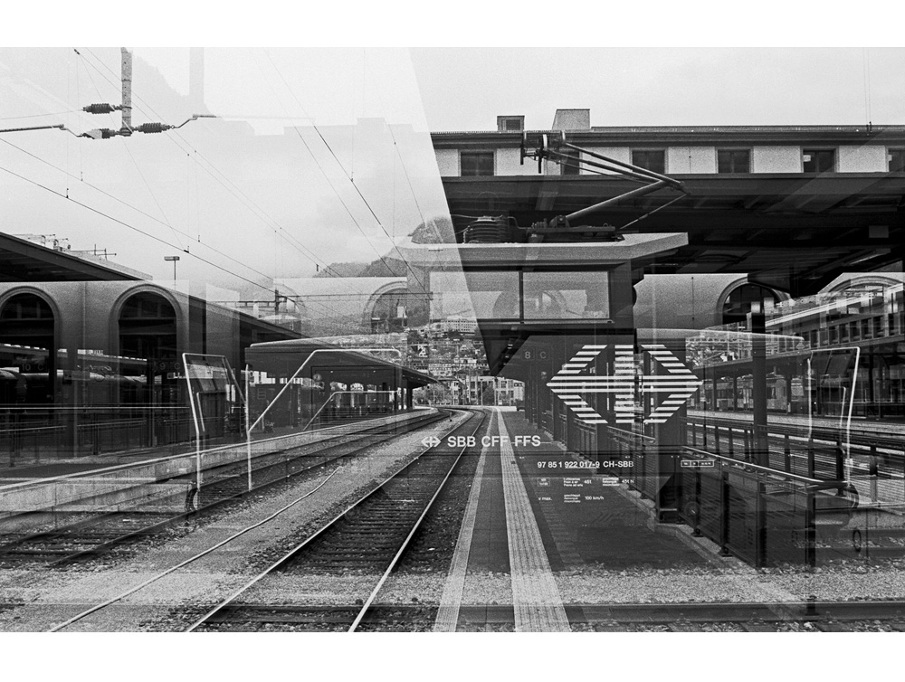
Alive
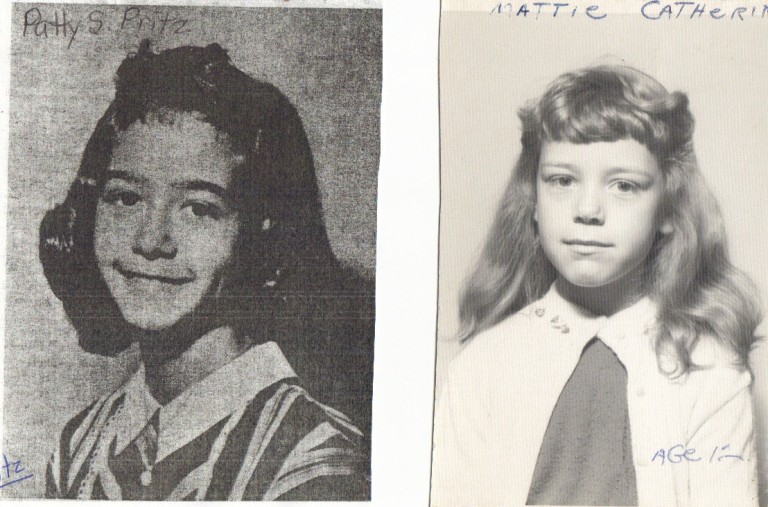
chicken scratch
itch my eyes
so please don’t
write
Picking Up The Pieces
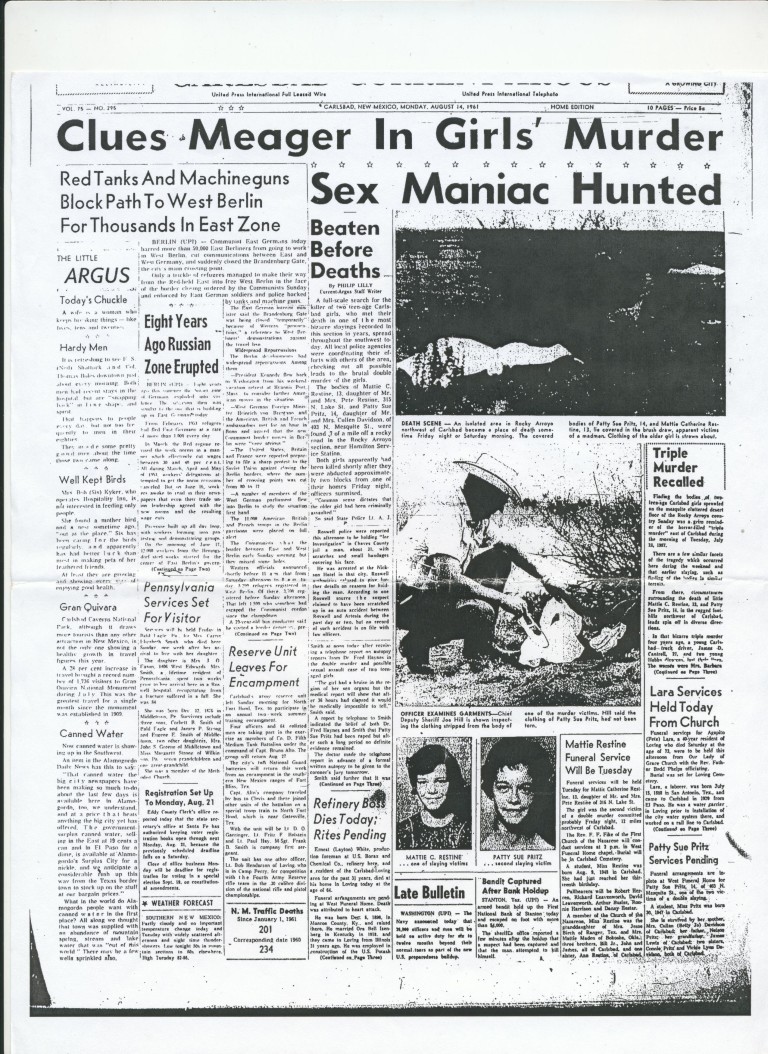
This is the front page of the Carlsbad Current Argus on Monday, August 14, 1961
Off the road
to Cox’s ranch
sitting for nearly 42 hours
On the team are State Police LT. A.J. Smith, Patrolman Melvin Miller, Patrolman W.C. McGrew and Patrolman Don Smith of Roswell, Deputy Sheriff L.S. (Bunch) Kyle, Cap. Dean Smith and Det. Lt. Billy Gill of the Carlsbad City Police
clutching tightly to a dark scarf
the first
like an antelope body
that of a small animal
beaten before death
but it was
plainly evident
the other was a child.
I Read This Statement And It Is True And Correct To The Best Of My Knowledge
In one of her posts on a web forum devoted to the case, Mattie’s sister, Ms. Self, posted this under her username, “Sunshine 1950” (all spelling and punctuation kept from the original post):
The two rabbit hunters statements when the girls were killed.
These two men were: Willie Dee Blair and Bill Melton.
Police reports:
Sunday, August 13, 1961, had interview with subject Willie Dee Blair, 2412 W. Texas St., Carlsbad, New Mexico, age 43, who was one of two subjects finding bodies of girls. Subject gave written signed statement, to-wit:
STATEMENT OF WILLIE DEE BLAIR
August 11, 1961, my wife was working from 7 am to 3 pm, I picked her up at work and then went home. About 5 pm, Mr. Hughes and his wife , who lives at 804 Legion Ave. Carlsbad, came by and wanted us to go fishing with them. We fished with them quite often. We got ready and left about sundown. We went to Mr. Hardesty's Ranch, paid him $1.00 to cross his land. We went to the river and fished till approx. 9 pm. We then went back to my house where we sat around and talked till about 10 pm. Mr. Hughes and wife then left and we went to bed. We did not go anywhere.
August 13, 1961, about 8 am, Bill Melton came by and wanted me to go fishing. We left about 9:30 am went north on Artesia Highway. We turned off before coming to Sitting Bull Falls Road and went back to a ranch. Bill said it was the Cox Ranch. Cox wasn't home. We went on by his house on down where there was some water holes and fished and shot turtles till a little after 12 noon. We then went to the filling station at Sitting Bull Falls Road and I drank a 7 Up. Bill then said he wanted to show me where there was a lot of rabbits. We had just one gun a 22 L.R. single shot which was mine. We turned on this road and Bill shot 3 rabbits. I thought I saw something red on my right and I told Bill to stop. I thought it looked like someone lying down. He backed up and pulled off the road and went out there and I saw the body. I just saw the one with the red shorts--we did not come to a stop. Bill said there was another body there--but I didn't see it.
We returned to the filling station to phone --but they didn't have a phone. We came on to Carlsbad and stopped at the North Y and called the Carlsbad Police Dept. 4 Officers came by and picked us up and we took them to the scene. We were in Bill's care I believe a 1956 Ford and he drove all the time.
I read this statement and it is true and correct to the best of my knowledge.
Willie Dee Blair....August 13, 1961 5:30 P.M.
The gritty texture of the language here is what keeps me coming back for more. On some level, I believe that everything needed has already been said. Perhaps it’s just been misconstrued, or has failed to reveal meaning.
Then again, that’s all that ever happens. We can never say exactly what we mean. Either language fails us, or we fail language—but either way, language always seems to get away, unscathed.
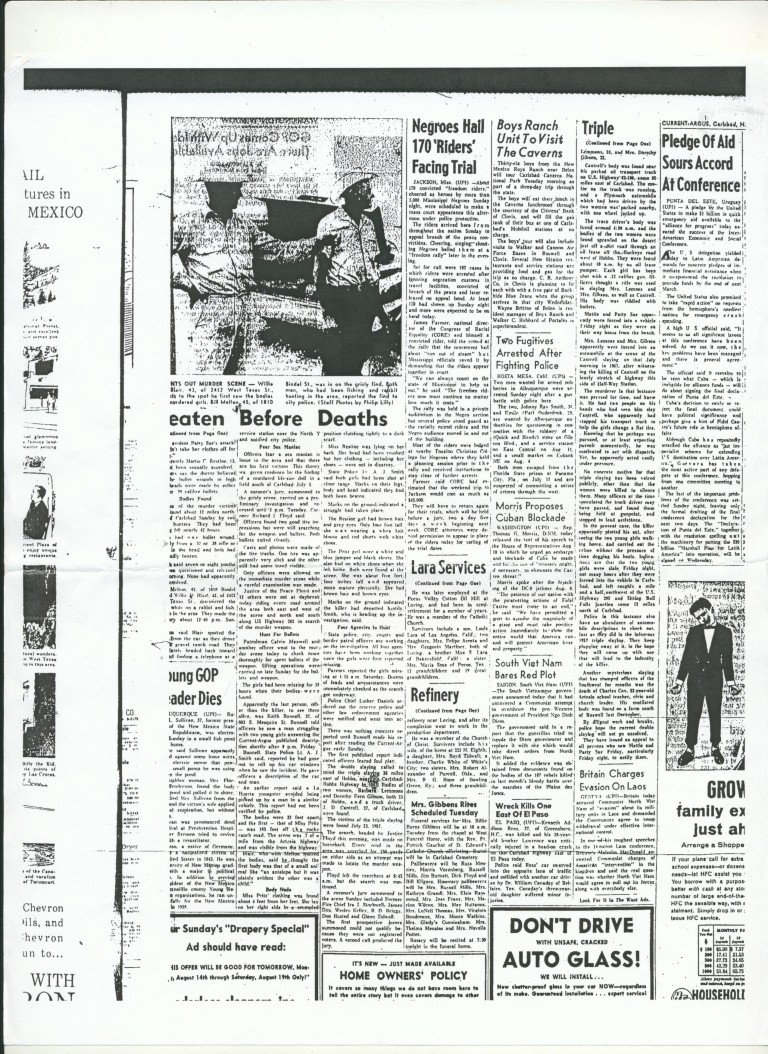
The language is alive
even if they’re dead
we’re all dead
it never dies.
Licking At Words
This is a video I am in the process of putting together for a poem from the project. The idea came to me while I was eating ice cream on an excruciatingly hot summer day in Carlsbad. The ice cream kept melting before I could like it off the cone.
The poem itself is about 80% language lifted from the newspaper articles (a lot of which is presented above) surrounding the murders; the film is family footage.
It is not finished; it is not solved.
My Favorite “Found” Poem
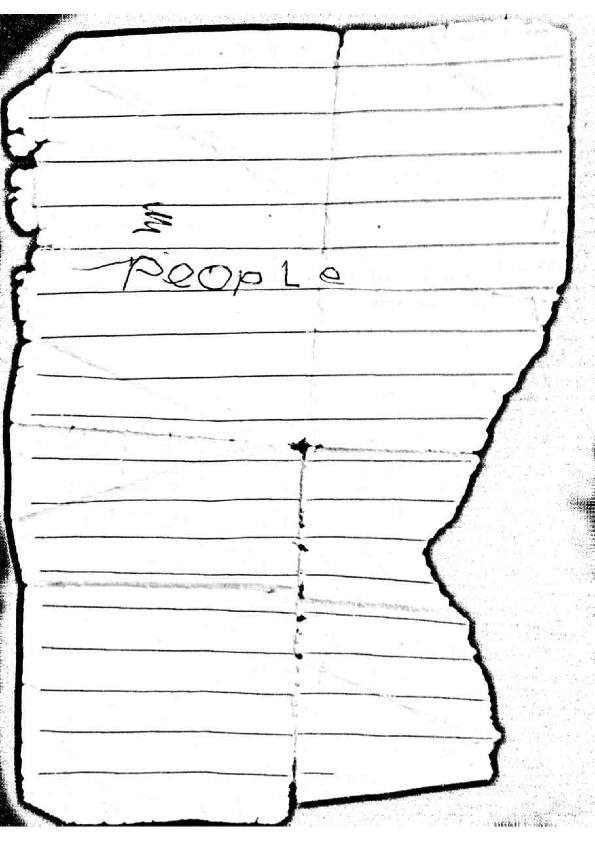
At some point—probably around the time I began reading Charles Olson’s Maximus Poems—it occurred to me that what I was really writing about was the death of Carlsbad—how every time I go back, it’s worse than the last time I was there.
Industry—such as potash mines and nuclear waste storage—has fallen through, or in the case of the oil industry, money has compromised what I love about the town’s character and appearance, especially by bringing in ruffians and roustabouts from Texas and elsewhere that make Carlsbad less of an everybody-knows-everybody sort of small town.
So, the project began to include more reflection on death than just the Patty Sue and Mattie case. I wouldn’t go so far as to say they are “symbols” at work in the project, but maybe they are ghosts that haunt the house of the project. They hover.
When my paternal grandmother, Nana, died a few months ago, my grandpa ended up in the hospital and wasn’t able to go to her funeral. At one point while I was visiting him, he half-opened his eyes in a mostly-asleep state and asked for paper and something to write with. So I obliged. Here’s what he handed back to me, after writing for about 5 minutes on the sheet of paper:
This Far-Flung Western Outpost
is how CNN correspondent Ed Lavandera refers to Carlsbad in this video revealing the town’s sinkhole problem.
It’s funny.
My favorite part is at “1:09” when Lavandera makes his “disappear in a second” sound, which just can’t be put into words—something like “pff”—after saying, “So that ‘Welcome to Carlsbad’ sign could—”
It’s not funny.
Carlsbad has thrived off what’s under the surface, creating an even more ominous aura to the town, I think—the main industries have been mining, WIPP (nuclear waste storage), tourism to the Carlsbad Caverns National Park, and oil extraction.
This is to say, everything happens underground.
The want to live
somewhere flat
even
to see
just the surface things
but we dig
and heap
Taken from one of the ads from an August 1961 issue of the Current Argus, surrounding the murders:
STOP
MOTH
DAMAGE
And an ad from a more recent issue (May 2010) of the Current Argus, which some townies now jokingly call the Current Anguish:
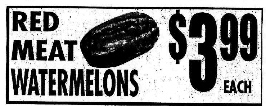
Alternating Words
My mother has visions. She even had one about the girls’ murder while driving down the highway next to what is now the site where their bodies were found. Here she is, re-telling me about it.
[audio m4a="http://poorclaudia.org/wp-content/uploads/2015/04/Vision.m4a"][/audio]
It rained all night, and in a flash flood the monster came skipping through town—a two-headed coyote, but with Patty Sue’s and Mattie’s faces. It didn’t hurt anyone, wasn’t hungry, but full of clumsy bones, ditzy like the teenager it was. It saw us all agape, gasping, and thought proudly of its homecoming and stature, giggling, hopscotching, fixing its hair.
I lead it around the gathering parade, pleading it to point out their killer—oilmen, fluffy beauticians, camouflaged hunters in camouflaged trucks, cowboys, bankers, glazed-over old geysers, and the cops—but to no avail.
It had no hands, and needed all its legs to keep hopscotching, following the flood back to Rocky Arroyo, where the faceless bodies were given names way back when.
It began to pick up pieces of their clothes strewn about, faded and tattered. I said, wait, I said. Wait. But tell me who done it, what do you stand for? Alternating words, Patty Sue’s and Mattie’s faces said they were tired of standing, needed to rest, and went back into a cave.
Tyler Cain Lacy
Tyler Cain Lacy lives in Chicago, where he got an MFA at Columbia College. He is the author of REUS (Press Board Press, 2014), and is a 2014 Luminarts Creative Writing Fellow. Recent work has appeared or is forthcoming in Salt Hill, Bombay Gin, Powder Keg, Word for/ Word, and Stolen Island, among others. Pieces from this project have appeared in elimae, Banango Street, Otoliths, Caffeine Dirge, and Sprung Formal. Find more here: tclacy.tumblr.com.